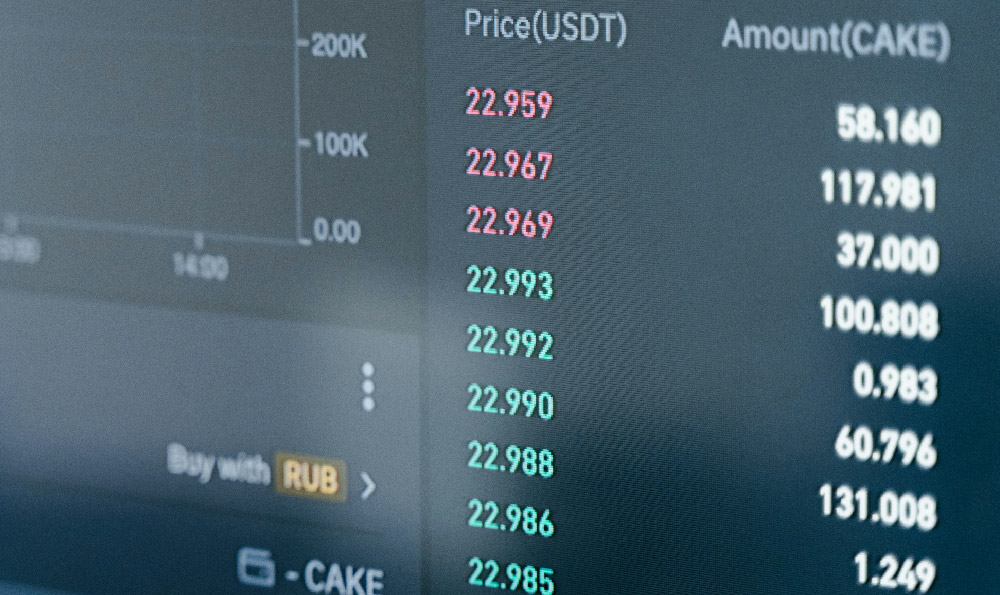在股票市场中,股民们常常会听到一个重要的投资原则:高抛低吸。这个原则说起来简单,但要真正掌握它并运用到实践中却并非易事。我们该如何理解和运用股票高抛低吸技巧呢?

高抛低吸,顾名思义,就是在股票价格较高时卖出(高抛),在股票价格较低时买入(低吸)。这个原则的背后概念是,我们要在股票价格上涨到一定程度时,将其卖出获利,然后在价格回落时再次买入,等待下一轮上涨。这样一来,我们可以在市场的变动中获取更多的收益。
1. 技巧一:观察市场趋势
观察市场趋势是判断何时高抛低吸的重要手段之一。我们可以将市场趋势比喻成一条长江,股票的价格波动就如同江水的涨落。当我们看到市场趋势向上时,就应该开始考虑高抛,因为此时股票价格很可能已经达到了一个相对较高的水平。相反,当市场趋势向下时,就是一个低吸的时机,因为股票价格可能已经跌至一个相对较低的水平。
2. 技巧二:掌握支撑位和压力位
在股票市场中,支撑位和压力位是两个重要的概念,也是判断何时高抛低吸的有力指标。支撑位是指股票价格下跌时,遇到买盘增多,出现止跌反弹的情况。压力位则是股票价格上涨时,遇到卖盘增多,出现回落的情况。当股票价格接近支撑位时,我们可以考虑低吸;当股票价格接近压力位时,我们可以考虑高抛。
3. 技巧三:平衡风险和收益
在运用股票高抛低吸技巧时,我们必须要平衡风险和收益。高抛低吸的本质是买在低点,卖在高点,但这并不是说我们每次都能完美的把握市场的波动。在进行高抛低吸时,我们需要合理评估风险,并设定好止损位,以防止亏损过大。我们也要明确收益目标,抓住适当的时机出售股票以获利。
股票高抛低吸技巧是一项需要经验和技巧的投资策略。我们需要通过观察市场趋势、掌握支撑位和压力位,以及平衡风险和收益来运用这一技巧。只有在市场的变动中保持冷静,善于分析和判断,我们才能更好地掌握高抛低吸的时机,从而获得较好的收益。但需要谨记,投资有风险,入市需谨慎。
Stock Trading Techniques of Selling at a High and Buying at a Low
In the stock market, investors often hear about an important investment principle selling at a high and buying at a low. This principle may sound simple, but truly mastering and applying it in practice is not an easy task. So, how can we understand and apply the techniques of selling at a high and buying at a low in stock trading?
Selling at a high and buying at a low, as the name suggests, means selling when the stock price is high and buying when the stock price is low. The concept behind this principle is that we sell the stock when its price has risen to a certain level to make a profit, and then buy it again when the price falls, waiting for the next round of price increase. In this way, we can gain more profits from market fluctuations.
Technique 1 Observing market trends
Observing market trends is one of the important means to determine when to sell at a high and buy at a low. We can compare market trends to the Yangtze River, and the stock price fluctuations to the rise and fall of the river. When we see an upward trend in the market, we should start considering selling at a high, as the stock price may have reached a relatively high level. Conversely, when the market trend is downward, it is a good time to buy at a low, as the stock price may have fallen to a relatively low level.
Technique 2 Mastering support levels and resistance levels
In the stock market, support levels and resistance levels are two important concepts and powerful indicators for determining when to sell at a high and buy at a low. Support levels refer to situations where the stock price falls, but encounters an increase in buying volume, resulting in a rebound. Resistance levels, on the other hand, occur when the stock price rises but encounters an increase in selling volume, resulting in a decline. When the stock price approaches a support level, we can consider buying at a low; when the stock price approaches a resistance level, we can consider selling at a high.
Technique 3 Balancing risk and return
When applying the techniques of selling at a high and buying at a low, we must balance risk and return. The essence of this technique is buying at a low point and selling at a high point, but it doesn\'t mean that we can perfectly grasp market fluctuations every time. Therefore, when engaging in selling at a high and buying at a low, we need to assess risks reasonably and set stop-loss levels to prevent excessive losses. At the same time, we should also have clear profit targets and seize the right timing to sell stocks for gains.
In conclusion, the techniques of selling at a high and buying at a low in stock trading require experience and skills. We need to apply these techniques by observing market trends, mastering support levels and resistance levels, and balancing risk and return. Only by remaining calm in market fluctuations, being proficient in analysis and judgment, can we better grasp the timing of selling at a high and buying at a low, and thus achieve better returns. However, it is important to remember that investing carries risks, and entering the market requires caution.
股票如何做到高抛低吸方法
股票高抛低吸是投资者在股市中追求利润的一种策略。通过买入低价股票并在价格上涨到高点时抛出,再在价格下跌到低点时买入,投资者可以实现盈利。这种方法需要投资者具备一定的知识和技巧,下面将介绍股票如何做到高抛低吸的方法。

一、选股策略
选股是成功实施高抛低吸策略的关键。投资者应该通过研究股票的基本面和技术面,选择具有良好前景且有较大涨幅潜力的股票。在选择上涨潜力较大的股票时,可以考虑以下几个方面:公司的盈利能力和增长潜力、行业的前景、股票的流动性以及资金的关注度等因素。选择具备较高潜力的股票是实施高抛低吸策略的基础。
二、买入策略
在股票价格低迷时买入是实施高抛低吸策略的关键之一。投资者应该根据股票的价值和市场情况,合理确定买入价格。一种方法是通过研究股票的历史价格和市盈率等指标,辨别是否存在低点。另一种方法是根据技术分析指标,如移动平均线、相对强弱指标等,寻找买入时机。买入时要谨慎选择,避免盲目跟风或赌博心态。
三、卖出策略
在股票价格上涨到高点时卖出是实施高抛低吸策略的另一个关键。投资者应该根据股票的价值和市场情况,合理确定卖出价格。一种方法是通过研究股票的历史价格和市盈率等指标,辨别是否接近高点。另一种方法是根据技术分析指标,如趋势线、乖离率等,判断是否存在卖出信号。卖出时要冷静理性,避免贪婪心态或过度自信。
四、风险控制
高抛低吸策略虽然可以获得较高的利润,但也存在一定的风险。投资者应该制定有效的风险控制策略,以避免亏损。一种方法是设定止损点,即在股票价格下跌到一定程度时自动出售。另一种方法是分散投资,将资金分配到多个股票上,以降低单一股票的风险。投资者还可以关注市场的热点和资金动向,及时调整买卖策略,以降低风险。
以上是股票如何做到高抛低吸的方法。投资者在实施该策略时需要充分了解股票市场,掌握相关的分析工具和方法,同时要保持冷静理性,避免盲目跟风和贪婪心态。通过正确的选股、买入和卖出策略,以及有效的风险控制,投资者可以在股票市场中实现高抛低吸,获得较高的投资回报。
股票高抛低吸成本价怎么算
一、成本价的定义及重要性

成本价是指购买某只股票时的平均购买成本,即买入股票的价格。对于投资者来说,了解自己持有的股票的成本价是非常重要的,因为成本价直接影响投资者的盈亏情况。在股票市场中,高抛低吸是许多投资者追求的投资策略,正确计算并掌握成本价对于制定投资决策至关重要。
二、计算股票的高抛低吸成本价
高抛低吸的目的是在股票价格波动中尽可能地降低成本,以便在未来获取更大的利润。如何计算股票的高抛低吸成本价呢?
1. 高抛成本价的计算
高抛成本价是指在持有某只股票时,投资者在价格上涨时卖出一部分股票后,再次以较低价格购买同样数量的股票所得到的成本价。计算高抛成本价的方法如下:
(当前持有股数 * 当前持有股票价格 - 卖出股数 * 卖出股票价格)/(当前持有股数 - 卖出股数)
2. 低吸成本价的计算
低吸成本价是指在持有某只股票时,投资者在价格下跌时买入一部分股票后,再次以较高价格卖出同样数量的股票所得到的成本价。计算低吸成本价的方法如下:
(当前持有股数 * 当前持有股票价格 + 买入股数 * 买入股票价格)/(当前持有股数 + 买入股数)
三、高抛低吸的风险与考虑因素
高抛低吸作为一种投资策略,虽然看起来非常诱人,但也存在一定的风险和考虑因素。
1. 风险控制
高抛低吸的核心是把握买卖时机,但对于市场行情的预判是十分困难的。如果投资者的判断失误,可能会错失更好的买入时机,甚至陷入持续亏损的境地。投资者在实施高抛低吸策略时,应注意严格控制风险,合理设置止损位,以避免巨大的损失。
2. 资金充足
高抛低吸需要投资者有足够的资金储备,以便在价格波动时能够随时买入或卖出股票。否则,如果资金不足,可能会错失买入或卖出的好时机,无法获得理想的成本价。
四、案例分析:高抛低吸的利润计算
为了更好地理解高抛低吸成本价的计算,以下是一个具体的案例分析:
假设投资者以10元/股的价格买入了1000股某只股票,后来该股票上涨到15元/股时,投资者卖出了500股。该股票价格下跌到12元/股时,投资者再次买入了500股。投资者的高抛成本价和低吸成本价如何计算呢?
1. 高抛成本价的计算:
当前持有股数 * 当前持有股票价格 - 卖出股数 * 卖出股票价格 = 500 * 12 - 500 * 15 = 6000 - 7500 = -1500
当前持有股数 - 卖出股数 = 1000 - 500 = 500
高抛成本价 = -1500 / 500 = -3元/股
2. 低吸成本价的计算:
当前持有股数 * 当前持有股票价格 + 买入股数 * 买入股票价格 = 500 * 12 + 500 * 10 = 6000 + 5000 = 11000
当前持有股数 + 买入股数 = 500 + 500 = 1000
低吸成本价 = 11000 / 1000 = 11元/股
五、结论
在股票市场中,高抛低吸是一种常见的投资策略,对于投资者来说,掌握成本价的计算方法可以帮助他们更好地把握买卖时机,降低投资风险,获取更大的利润。高抛低吸也存在一定的风险和考虑因素,投资者应根据自身情况和市场行情合理选择使用。通过合理计算成本价,投资者可以更加准确地评估自己的投资策略并做出相应的决策。






















